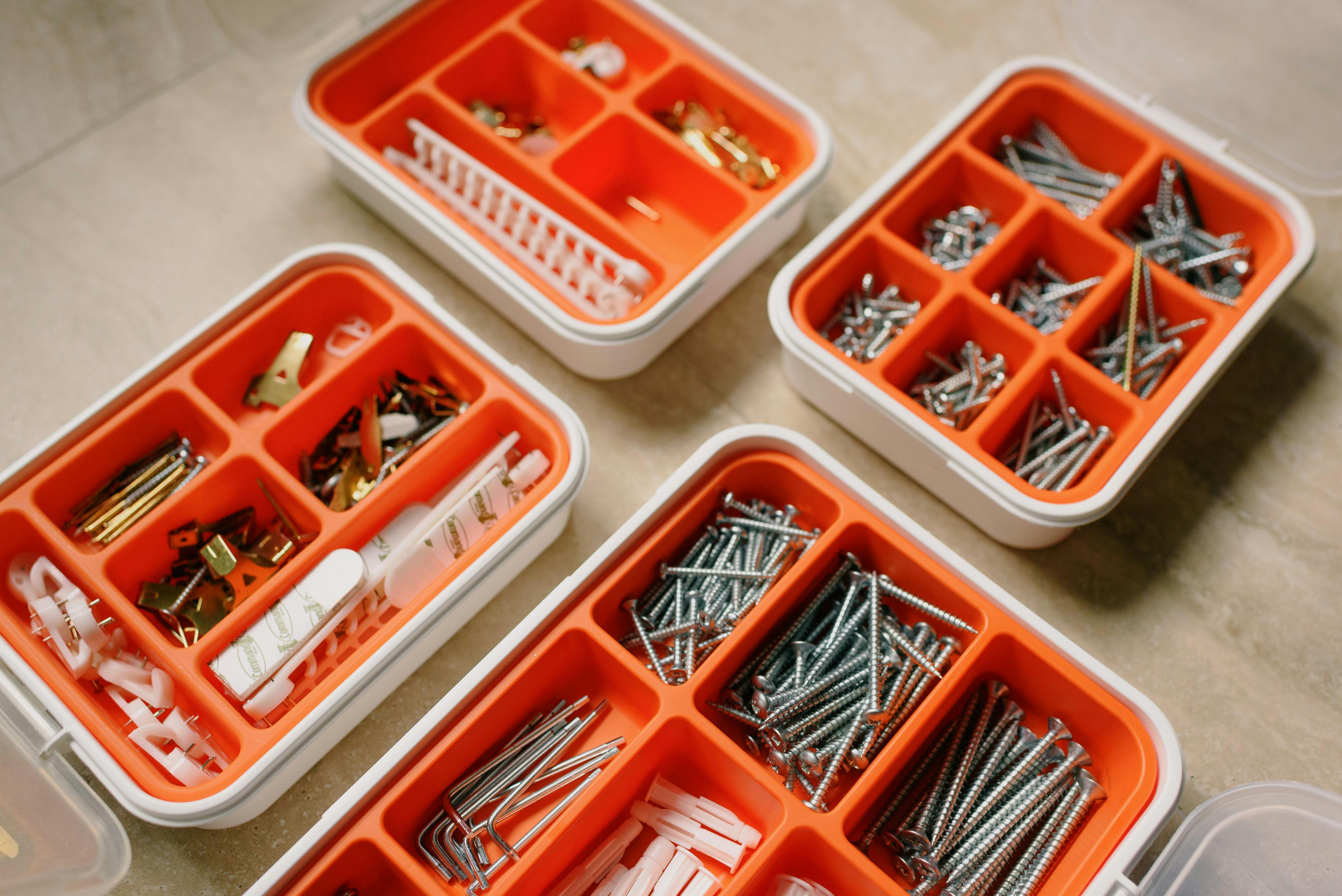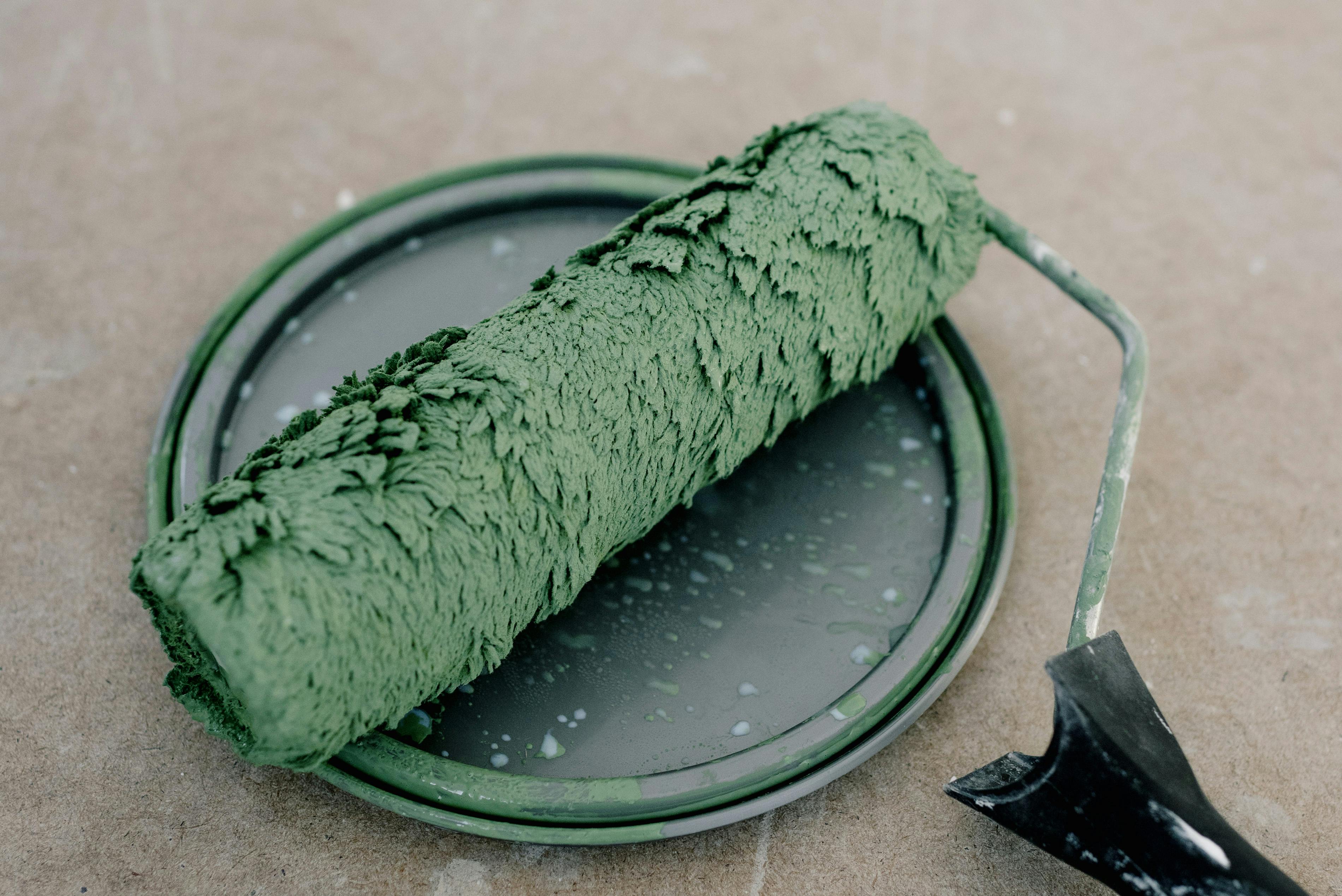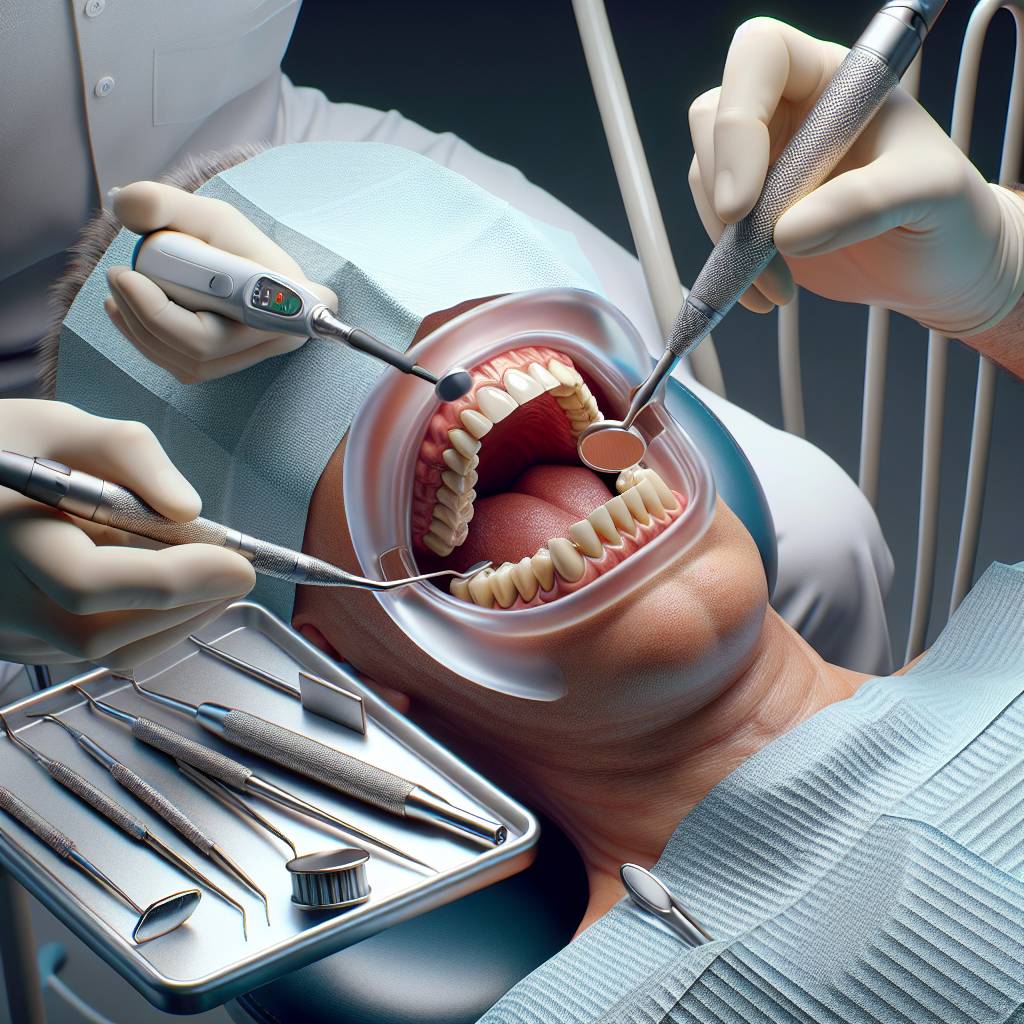Having stained teeth can be embarrassing and can have a significant impact on your self-esteem. Fortunately, there are several ways to fix stained teeth and restore your bright, white smile. In this article, we’ll explore some of the most effective methods for removing stains from your teeth and getting them back to looking their best.Whitening stained teeth is a relatively easy process that can be done at home or with the help of a professional.
At home, you can use whitening toothpaste or whitening strips to gradually lighten the color of your teeth. Whitening toothpastes contain mild abrasives and chemicals that work to remove surface stains. Whitening strips are thin, clear strips coated with a peroxide-based whitening gel that you apply directly to your teeth. Both of these products should be used as directed for best results.
You may also choose to visit a dentist for professional whitening treatments. Professional treatments are usually much more effective than at-home treatments and results are often seen after just one session. Depending on the severity of the stains, multiple sessions may be required for optimal results.
Professional Teeth Whitening
Having a bright and white smile is something that everyone desires. However, with the foods and drinks that we consume on a daily basis, it’s not always easy to maintain a bright and healthy smile. Professional teeth whitening can help you achieve that perfect smile in no time!
Professional teeth whitening is an ideal solution for those looking to dramatically improve the appearance of their teeth. This type of whitening is done by a professional in-office or at home with take-home trays. The procedure typically involves the use of bleaching agents that are applied to the surface of the teeth to help remove stains and discoloration.
When performed by a professional, professional teeth whitening can produce dramatic results very quickly. In just one visit, your dentist can lighten your teeth up to 8 shades whiter than before! This type of whitening is also convenient because it doesn’t require any extra maintenance or upkeep after treatment is complete.
Professional teeth whitening is also safer than other over-the-counter methods as it’s done under the supervision of a dental professional. Your dentist will be able to monitor your progress throughout the process and make sure that you’re receiving the best possible results without causing any damage to your tooth enamel or gums in the process.
If you’re looking for an effective way to achieve brighter, whiter teeth, professional teeth whitening may be just what you need! With just one visit to your dentist, you can get long lasting results that will have you smiling brighter than ever before!
Natural Ways to Remove Teeth Stains
Having stained teeth can be a source of embarrassment and discomfort. Fortunately, there are many natural ways to remove stains from your teeth. You can use home remedies to get rid of yellow or brown teeth stains, such as using baking soda, sea salt, hydrogen peroxide, and apple cider vinegar. Baking soda and sea salt can be mixed together and used as an abrasive paste to scrub away the surface layer of your teeth. Hydrogen peroxide is a natural bleaching agent that can be used to whiten your teeth and remove stubborn stains. Apple cider vinegar is also known for its whitening properties, and it can be used in a similar way as hydrogen peroxide.
In addition to home remedies, there are certain foods that can help remove tooth stains naturally. Foods like apples, celery, strawberries, carrots, onions, and pineapple contain natural acids that help break down the plaque on your teeth and reduce staining. Eating these foods regularly will help keep your teeth looking clean and white.
Furthermore, brushing with a toothpaste designed for whitening purposes will help reduce staining on your teeth. Many toothpastes contain ingredients like hydrogen peroxide or baking soda that work to break down the plaque on your teeth and make them look whiter over time. When choosing a toothpaste for whitening purposes, look for one with natural ingredients like xylitol or coconut oil.
Finally, drinking plenty of water throughout the day helps flush away bacteria that cause tooth discoloration. Water also helps neutralize acids in the mouth that create plaque buildup on the surface of your teeth. Drinking enough water each day will keep your mouth clean and free from bacteria that cause staining.
Foods That Can Help Prevent Staining
Staining on teeth can be embarrassing and make you feel self-conscious. Fortunately, you can help keep your teeth looking white and healthy by eating certain foods. Eating certain fruits, vegetables, and other foods can help prevent staining on your teeth.
Fruits such as apples, oranges, and strawberries are all good for your teeth because they contain natural acids that can help prevent staining. Eating an apple after a meal or snack can help clean your teeth and remove any food particles that may have stuck to them.
Vegetables such as carrots, celery, and broccoli are also good for your teeth because they contain fiber which helps clean the surface of your teeth. Eating a few pieces of raw vegetables after each meal can help remove any food particles that might have stuck to your teeth.
Milk is also an important part of any diet because it contains calcium which helps strengthen the enamel of your teeth. Drinking a glass of milk after each meal will help keep your teeth strong and white.
Cheese is also beneficial for preventing staining on your teeth because it helps neutralize the acid in food and beverages that can cause discoloration. Eating a small piece of cheese after a meal or snack will help reduce the risk of staining on your teeth.
Green tea is another great way to prevent staining on your teeth because it contains polyphenols which are antioxidants that fight free radicals that cause damage to the enamel on your teeth. Drinking a cup of green tea after each meal will help protect against staining and keep your smile looking bright and healthy!
In addition to eating these foods, it is important to maintain good oral hygiene habits as well such as brushing twice daily with fluoride toothpaste, flossing at least once per day, using mouthwash regularly, and visiting the dentist every six months for professional cleanings. Following these habits along with eating the right foods will ensure that you have healthy looking white teeth for years to come!
Why is it Important to Brush Your Teeth after Eating?
Brushing your teeth after eating is an important part of oral hygiene. Doing so helps to remove food particles and bacteria that can cause plaque buildup and cavities. It also helps to reduce the risk of gum disease, which can lead to serious health problems. Brushing your teeth regularly can help keep your smile looking bright and healthy. By brushing your teeth after meals, you can help prevent the buildup of plaque and tartar, which can lead to tooth decay and gum disease. Additionally, brushing your teeth after meals helps to freshen breath and remove any lingering food particles that may be stuck in between your teeth. Proper brushing techniques should be followed in order for the best results.
It is recommended that you brush your teeth at least twice a day with a soft-bristled toothbrush and a fluoride toothpaste. When brushing, use gentle circular motions with short strokes and pay special attention to the area around the gum line where plaque buildup often occurs. Take care not to brush too hard as this may damage the gums or enamel of your teeth. You should also floss once a day in order to remove any trapped food particles or plaque between the teeth that may not have been removed by brushing alone.
It is important to remember that brushing after eating is just as important as regular brushing habits throughout the day. Eating meals high in sugar or carbohydrates increases acidity levels in the mouth which can erode enamel over time if not taken care of properly with regular brushing habits. Additionally, brushing immediately after consuming sugary drinks or acidic foods like oranges helps to reduce their damaging effects on tooth enamel by removing them from your mouth more quickly than if you were not to brush at all.
By developing good oral hygiene habits such as regularly brushing your teeth after meals, you can help protect against cavities and gum disease while keeping your smile looking bright and healthy for years to come!

Proper Oral Hygiene for Whiter Teeth
Proper oral hygiene is essential for maintaining healthy teeth and gums, as well as achieving a brighter smile. Brushing your teeth twice a day for two minutes each time is the most important step in maintaining proper oral hygiene. It helps to remove plaque buildup and prevents bacteria from forming on the surface of the teeth. Flossing daily is also important for removing food particles and debris from in between the teeth, which can cause decay if left unchecked. In addition to brushing and flossing, using a mouthwash with fluoride can help to reduce cavities and keep your breath fresh.
Regular dental checkups are also important for maintaining a whiter smile. During these visits, your dentist can check for any signs of tooth decay or gum disease, which can lead to staining or discoloration if untreated. Your dentist may recommend professional teeth whitening treatments such as bleaching or laser whitening if more intensive whitening is needed.
Finally, it’s important to maintain a balanced diet and limit sugary snacks and drinks that can cause staining or discoloration of the teeth over time. Avoiding tobacco products such as cigarettes and chewing tobacco is also essential for preventing yellowing of the teeth. Practicing good oral hygiene habits combined with regular dental visits are key for achieving a brighter smile.
At Home Teeth Whitening Options
There are many ways to whiten your teeth at home, from natural remedies to store-bought products. Even though some methods may be more effective than others, it is important to understand the pros and cons of each type of treatment before attempting to whiten your teeth. Natural remedies are typically less expensive and have fewer side effects than store-bought products, but they may take longer to produce results. Store-bought products can provide quicker results, but they often have more potential side effects and can be more expensive. Here are some of the most popular at-home teeth whitening options:
1. Baking Soda: Baking soda is a popular natural remedy for whitening teeth. The abrasive texture helps remove stains from the surface of the teeth, while its alkaline nature helps break down plaque and bacteria on the teeth. To use baking soda to whiten your teeth, make a paste out of baking soda and water and brush your teeth with it once or twice a week.
2. Hydrogen Peroxide: Hydrogen peroxide is another popular natural remedy for whitening teeth. It also has an abrasive texture that helps remove stains from the surface of the teeth, as well as antibacterial properties that help eliminate bacteria in the mouth. To use hydrogen peroxide to whiten your teeth, make a paste out of hydrogen peroxide and water and brush your teeth with it once or twice a week.
3. Store-Bought Products: There are many store-bought products available for at-home tooth whitening including toothpastes, strips, gels, trays, rinses, and more. These products often contain bleaching agents such as hydrogen peroxide or carbamide peroxide which help break down stains on the surface of the teeth for whiter looking smiles. While these products can be effective in removing surface stains on the teeth, they should always be used as directed by the manufacturer to avoid any potential side effects or damage to the enamel of your teeth.
Avoiding Drinks and Foods That Stain Teeth
Staining your teeth is a common problem that can be caused by certain drinks and foods. Fortunately, there are simple steps you can take to minimize the effects of staining on your teeth. Here are some tips for avoiding drinks and foods that can stain your teeth:
Avoid dark-colored beverages like coffee, tea, cola, and red wine. These beverages contain tannins which can leave deep stains on your teeth. If you do choose to drink these beverages, try to rinse your mouth with water afterward or use a straw so the liquid bypasses your teeth.
Stay away from acidic drinks like sports drinks and sodas. These drinks can erode the enamel on your teeth, making them more prone to staining. If you do choose to drink these beverages, try drinking them through a straw and be sure to rinse or brush afterward.
Limit the amount of brightly colored foods you eat such as berries, mustard, and tomato sauce as they can all cause staining on your teeth. If you do choose to eat these types of foods, try eating them with other food items that help remove staining such as cheese or apples which act as natural toothbrush bristles.
By following these simple tips for avoiding drinks and foods that stain your teeth, you can help keep your smile looking bright and healthy!

Conclusion
Stained teeth can be an unpleasant aesthetic and, if left untreated, can lead to further dental problems. Fortunately, there are a variety of techniques to reduce or eliminate tooth discoloration. Teeth whitening is the most common method of lightening stains, however, it is important to consult with a dentist to determine what whitening system would be best for your individual needs. Additionally, regular dental checkups and cleaning can help to prevent staining in the first place.
Ultimately, stained teeth can be treated with a variety of methods depending on the cause and severity of the discoloration. With proper care and maintenance, you can keep your smile looking its best.

